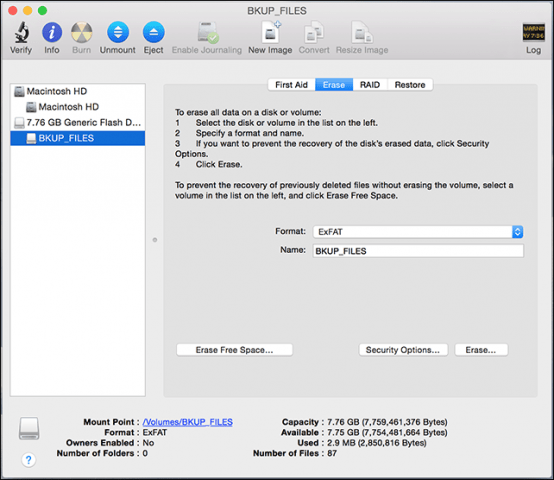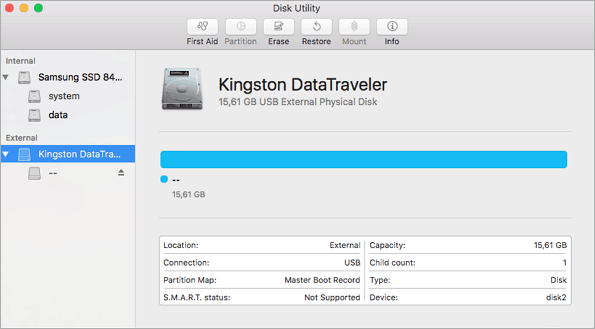Today most users will not need to install MS-DOS on their computers. You want to install MS-DOS to get older programs or games to work.
Yes, connecting an external hard drive or USB flash key to a Mac will generally read and work fine as is because the Mac can easily read other filesystem formats, including Windows MSDOS, FAT, FAT32, ExFat, and NTFS formats, but unless you intend on using the drive between a Windows and Mac machine, formatting it to be entirely Mac compatible. Next, go to Format at the centre of the screen and select MS-DOS (Fat) file format system that allows compatibility with your windows drive. Below that, you will see Name this allows you to change the name of your external drive if you wish to.
When copying that same folder from the flash drive to my hard drive the two were close—1 minute 36 seconds for the OS X Extended format and 1 minute and 40 seconds for the MS-DOS format.
Although there are earlier versions of MS-DOS, users who want to install a stand-alone version of MS-DOS should install the last version of MS-DOS, version 6.22.
To complete this lab, we have to complete the following tasks:



- Create active partition (Fdisk.exe)
- Format free disk space (Format.exe)
- Complete MS-DOS installation
Minimum MS-DOS hardware requirements are:
Format Flash Drive Ms-dos Mac

- 512K conventional memory
- Floppy drive for installation
- Approximately 3.5 MB of free disk space for all the supported components
Later versions of MS-DOS (6.22 and earlier) ship on three installation floppy disks. If you boot the computer with the first diskette, the installation process starts automatically.
The installation process for MS-DOS 6.22 is interactive. Insert Disk 1 and boot the PC. The first disk automatically loads the installation program. The installation process prompts for the other installation floppies as they are required.
NOTE: If the Setup program does not automatically launch after you start the computer, yo may have to modify the computer's BIOS settings.
At the end of the BIOS boot sequence computer storage devices are checked to locate the operating system. Typically, the first hard drive is listed first, but the BIOS can be set to have the BIOS check the floppy disk, a CD-ROM, or another hard drive first with the order in which the other devices are checked also specified. Depending on the CMOS data, the following actions occur:

Mac Flash Drive To Pc
- If the boot device is the hard drive, the BIOS looks for the master boot record.
- Master Boot Record (MBR) found on each physical disk on sector 1
- Program
- Partition Table: 4 partitions (one extended)
- Partition
- Active
- Logical Drive C: (volume)
- OS Boot sector (program)
- FAT
- Root directory
... - Partition
- Logical Drive D: (volume)
- Logical Drive E: (volume)
...
- If the boot device is a floppy disk or a CD-ROM, the BIOS looks at the first sector of the disk for the operating system's boot program.
- If the boot program is not found on the first device listed, the next device indicated is searched, and then the third, and so on until the boot program is found.
- If no boot device is found, the boot sequences stop and an error message ('No boot device available') is displayed.
Comments are closed.